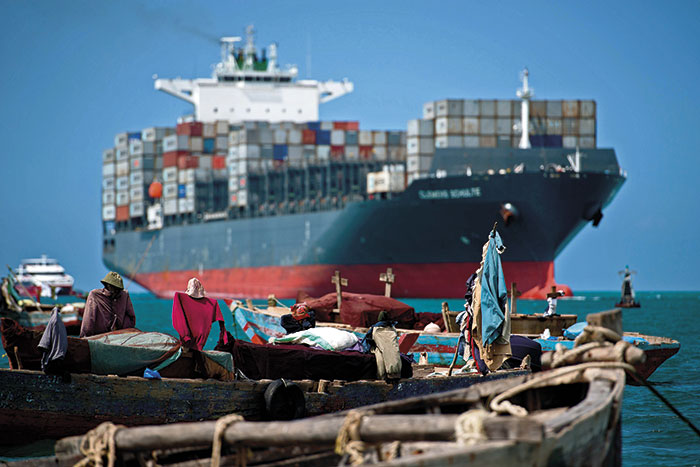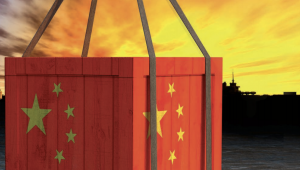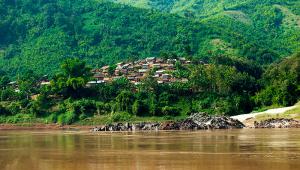Two years ago, Kenya opened its biggest-ever infrastructure project 18 months ahead of schedule.
Built and financed by the Chinese government, the new £2.5bn railway line, running 470km from Nairobi to the port of Mombasa is named the Madaraka Express, in commemoration of the day Kenya attained internal self-rule. As president Uhuru Kenyatta pointed out at the launch ceremony, the railway supersedes the ‘lunatic express’, built by the British more than a century ago when Nairobi scarcely existed as a town.
The symbolism could not be much plainer: China is helping the developing world realise its potential now that it has rid itself of the colonial yoke. In Africa, Asia and – to a lesser extent – South America, a vast array of Chinese-backed projects such as airports, stadiums, electricity grids and gas storage are now improving many lives materially.
Given the world economy’s hunger for development finance, China’s arrival on the scene has been welcomed. According to the McKinsey Global Institute and the World Bank, unmet global infrastructure needs over the next decade will run at more than $3 trillion annually if they are carried out in a low carbon and socially inclusive manner.
'The danger for China is that it is lending lots of money to risky countries, generally on commercial terms.'
Brookings Institute
But in the three decades since Beijing stepped up to become a big international aid donor, even the direct recipients have had cause to worry about China’s motives and whether its development push is a force for good or ill. Though the new Kenya railway, for example, provides affordable travel, it provided relatively few construction jobs for locals, and Chinese managers were relied on to run it. Meanwhile, in the longer term, the Madaraka line will bind the whole of East Africa into Beijing’s controversial multi-trillion-dollar Belt and Road Initiative infrastructure, radiating out trade routes from China.
In sheer money terms, China is the world’s largest international aid donor country. It spent $38bn a year – a quarter more in total than the US and roughly the same per head as Greece or Portugal – in 2014, the latest year for which figures are available. Seven of the top 10 recipients are in Africa. Others on the list are Cuba, Cambodia and Sri Lanka.
As Beijing frequently reiterates, it practises a non-interference aid policy: unlike preachy Western donors, its support comes without political strings, lectures on human rights, or demands for a commitment to controversial policy reforms, such as deregulating financial markets. Politicians from the developing world applaud the fact that deals can be done swiftly and without fuss.
 But there’s a catch: China, which is not a member of the OECD, does not meet the organisation’s strict tests on what can or cannot be defined as overseas development aid – it does not even try to. The OECD requires aid to be transparently reported and have as its primary objective truly promoting the welfare and economic development of the recipient country. China, by contrast, has remained a non-transparent funder of overseas projects, creating “an informational black hole for those trying to understand where and on what it is spending its money”, according to research unit AidData.
But there’s a catch: China, which is not a member of the OECD, does not meet the organisation’s strict tests on what can or cannot be defined as overseas development aid – it does not even try to. The OECD requires aid to be transparently reported and have as its primary objective truly promoting the welfare and economic development of the recipient country. China, by contrast, has remained a non-transparent funder of overseas projects, creating “an informational black hole for those trying to understand where and on what it is spending its money”, according to research unit AidData.
Some goes on what would qualify as aid under accepted rules. But mainly China engages in ‘win-win’ projects, where there is something in it for both sides. Once, political favours to foreign governments dominated its aid programme, but now commercial benefits rank high, and, increasingly, the country’s big geopolitical ambitions are taking centre stage.
Chinese largesse faces many of the general criticisms levelled at other development aid spend – that it can slow much-needed economic reforms and create dependency, for example. But critics cite a litany of complaints specifically about Chinese giving. They argue that a disproportionate amount of the huge Belt and Road spending goes on building coal-fired power stations, worsening climate change; the lack of transparency is said to encourage corrupt deals with local political strongmen, and environmental impacts are ignored; there are too many trophy projects, such as football stadiums, and typically too few jobs are created for local workers.
What’s more, a new urgency has come to the fore with claims that China practises so-called debt diplomacy against vulnerable developing countries. The accusation is that Beijing intentionally extends excessive credit as a tactic to extract economic or political concessions from a debtor country if it is unable to honour its debt obligations. Laos, Montenegro, the Maldives and Pakistan are among those most in danger.
Also vulnerable is Sri Lanka. China agreed a deal with the former president, Mahinda Rajapaksa, to build the new deep-water Hambantota Port. As many experts had forecast, the port has failed commercially. Sri Lanka’s new government struggled to make payments on the debt.
Under heavy pressure and after months of negotiations with the Chinese, the government handed over the port and 15,000 acres of land around it for 99 years. The transfer gave China control of territory just a few hundred miles off rival India, and a foothold along a critical commercial and military waterway. Chinese naval vessels have now docked there.
All this has led sceptics to dub China’s much-vaunted development assistance as “an aid curse with Chinese characteristics”; China is now routinely charged with exploiting its newfound influence to become “a neocolonial” power. Significantly, several states such as Pakistan, Malaysia and Sierra Leone have recently told the Chinese they want to put the brakes on further aid from Beijing.
Some context is important, however. First, Western aid programmes are the butt of equally trenchant criticism: the West, tainted by a historical colonialist role, has long been accused of hypocrisy and upbraided for imposing neoliberal policies, such as privatisation of utilities, on struggling states in return for aid.
Second, experts say that, somewhat contrary to appearances, China’s international development has not been seamless but somewhat messy and ad hoc. In recognition of this, president Xi Jinping created a new body last year, the China International Development Cooperation Agency. This is designed “to cut through the overlap and discord in the current system”, says Jacob Mardell of the Berlin-based Mercator Institute for China Studies.
Meanwhile, the sheer scale of the figures involved is problematic to the Chinese government as the domestic economy slows and the fallout from the trade war with the US begins to bite. “The danger for China is that it is lending lots of money to risky countries, generally on commercial terms,” the think-tank Brookings Institute said recently. President Xi will have to consider his foreign policy ambitions: the scale of China’s large overseas development budget is controversial at home.
Still, it seems certain that China will continue to pour vast amounts into aid. Just as with Western donors, a mix of motives will lie behind this exercise of soft power. As Bradley Parks, executive director of AidData, concludes: “It’s time to dispense with the notion that China must be either a villain or a hero. It is neither. Its motivations and impacts are complex, and we will do a disservice to those who make important decisions about cooperation and competition with China if we allow the policy debate to get hijacked.”
Bigger fish to fry
Just 75km north from Dar es Salaam, in Tanzania, Africa’s biggest port is being constructed at a cost of $11bn on the site of a tiny fishing village. The vast Bagamoyo complex is being built by the state-owned China Merchants Port and is backed by an Omani sovereign wealth fund.
Once completed, the facility will dwarf Kenya’s port at Mombasa [pictured right] – East Africa’s existing trade gateway. And the site is to be surrounded by a special economic zone that should attract around 700 industries and could, some hope, make it a new economic growth hub, akin to China’s Shenzhen.
The mega-project was unveiled during a visit of the Chinese premier in 2013. But critics question the scale and location of the ambitious development. They say that the growth of the Tanzanian economy does not justify construction of a port of this magnitude and that upgrading existing port facilities would have been adequate for up to 20 years.














